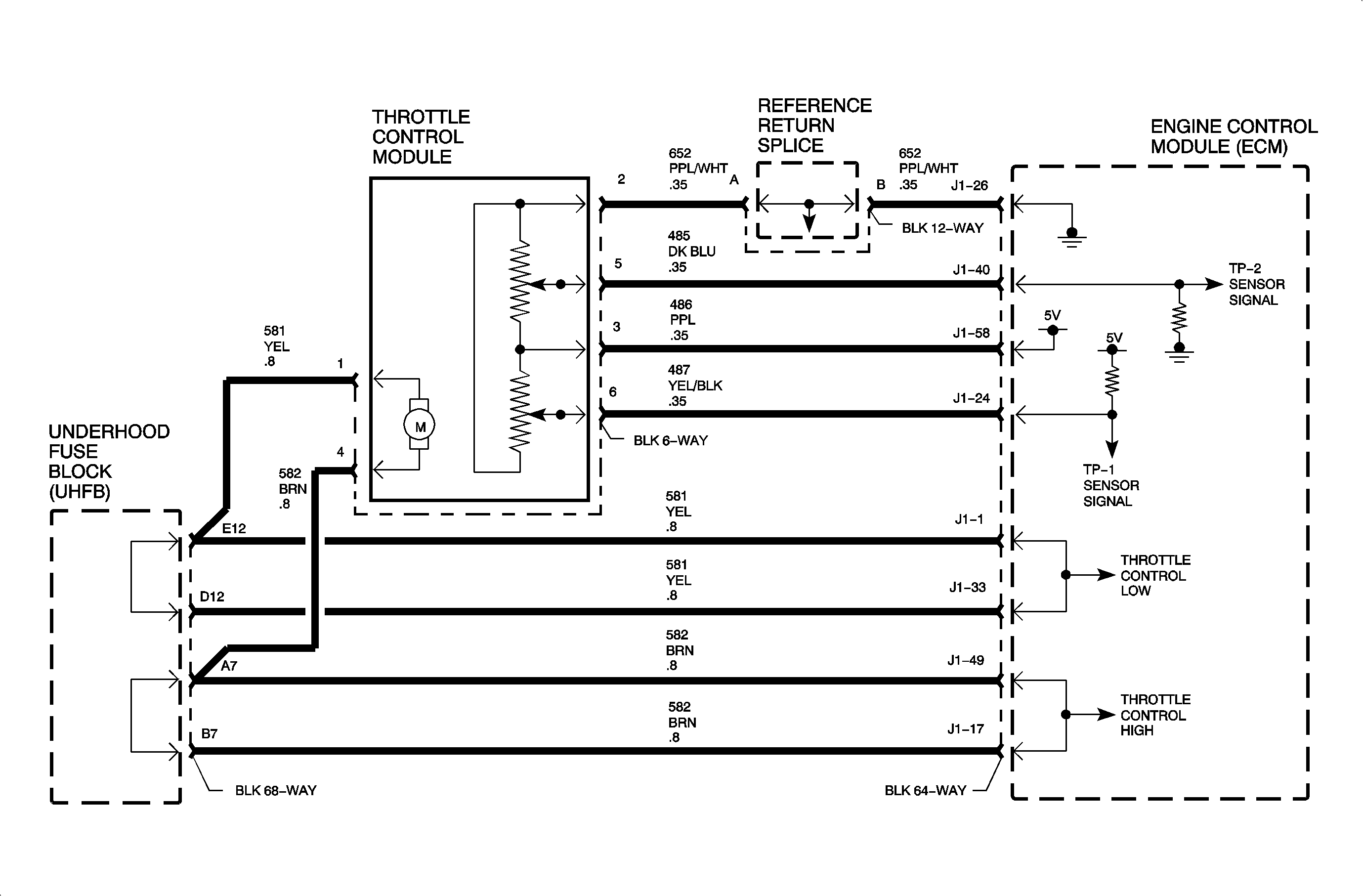
Circuit Description
The throttle control module contains two throttle position (TP) sensors with
a common 5 volt supply, a common ground, and two independent signal circuits
that vary resistance according to changes in throttle plate position. The ECM measures
the signal voltage from each TP sensor, which is a reduced value of the ECM 5 volt
reference. As the throttle plate opens from 0% throttle to wide open throttle, the
voltage on the TP sensor 1 signal increases from 0.6 (+/-0.2) volts to
4.3 (+/-0.2) volts, while the voltage on the TP sensor 2 signal decreases from
4.4 (+/-0.2) volts to 0.76 (+/-0.2) volts. DTC P0121 sets when the TP sensor 1 indicates
too large of a difference in throttle angle based on the mass air flow (MAF) reading.
DTC Parameters
DTC P0121 will set if TP sensor 1 percentage differs greater than 13% based
on the MAF sensor signal when:
| • | Condition exists for longer than 140 ms. |
| • | Battery voltage greater than 7.0 volts. |
DTC P0121 diagnostic runs continuously with engine running.
P0121 is a (type A) DTC.
Diagnostic Aids
DTC P0121 indicates TP sensor 1 conflicts with the MAF reading.
A skewed TP sensor 1 can set this DTC. Check the voltage range of the sensor
using THROTTLE POSITION VALVE in the SPECIAL FUNCTIONS section of the Scan tool, which
will command the throttle control module to move the throttle plate. The approximate
(+/- .1) TP SENSOR 1 voltages at 25% TP ANGLE intervals should be:
If there is a circuit fault detected for TP sensor 1 and TP sensor 2 in the
same ignition cycle, the ECM will default to REDUCED PERFORMANCE mode for the entire
ignition cycle, even if the fault is corrected.
Possible causes:
| • | Poor connections or terminal tension. |
| • | Corrosion at terminals or high resistance in wiring. |
| • | Water intrusion into connectors. |

